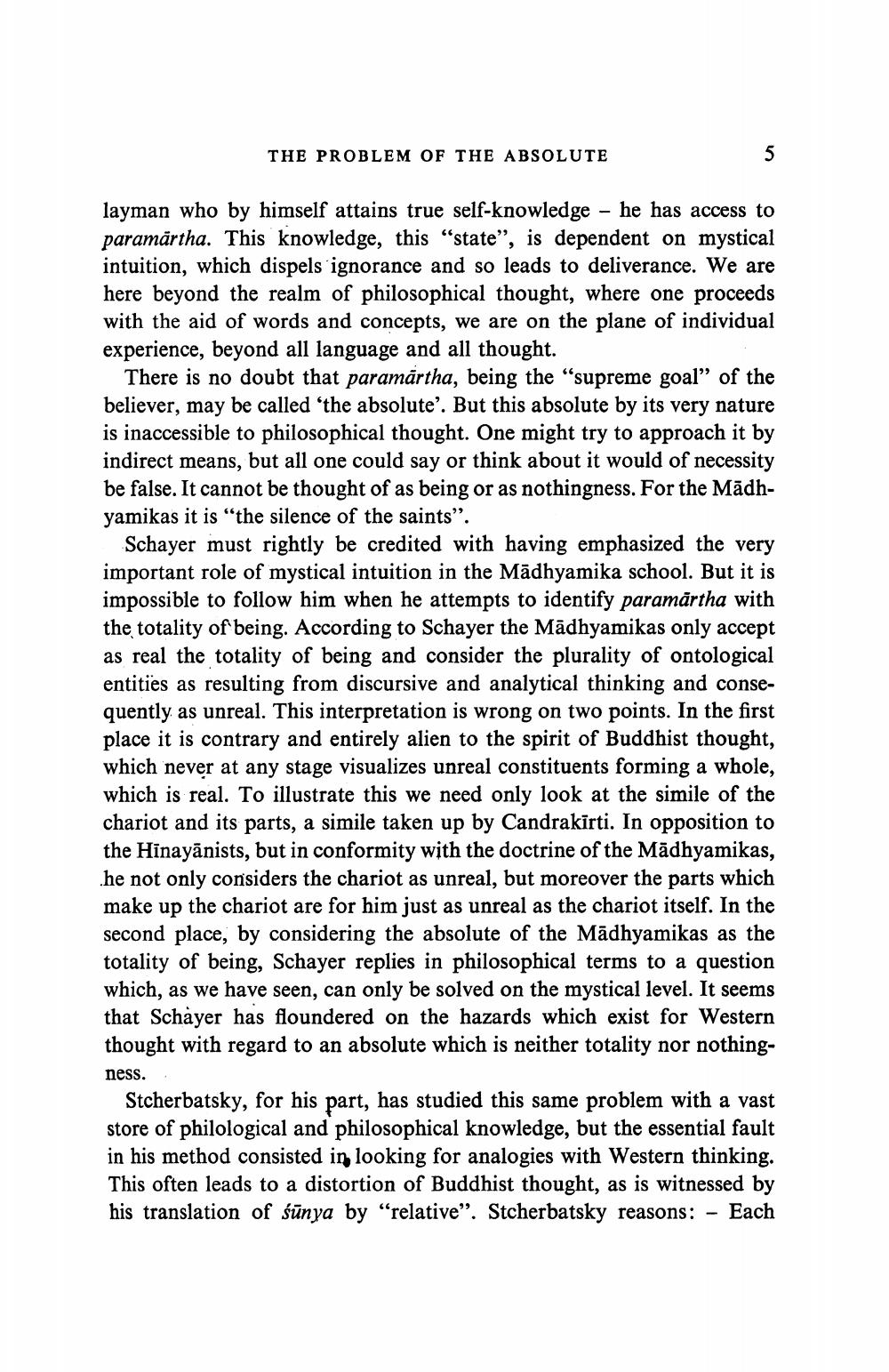________________
THE PROBLEM OF THE ABSOLUTE
layman who by himself attains true self-knowledge - he has access to paramārtha. This knowledge, this "state", is dependent on mystical intuition, which dispels ignorance and so leads to deliverance. We are here beyond the realm of philosophical thought, where one proceeds with the aid of words and concepts, we are on the plane of individual experience, beyond all language and all thought.
There is no doubt that paramărtha, being the “supreme goal" of the believer, may be called 'the absolute'. But this absolute by its very nature is inaccessible to philosophical thought. One might try to approach it by indirect means, but all one could say or think about it would of necessity be false. It cannot be thought of as being or as nothingness. For the Mādhyamikas it is "the silence of the saints”.
Schayer must rightly be credited with having emphasized the very important role of mystical intuition in the Mādhyamika school. But it is impossible to follow him when he attempts to identify paramärtha with the totality of being. According to Schayer the Mādhyamikas only accept as real the totality of being and consider the plurality of ontological entities as resulting from discursive and analytical thinking and consequently as unreal. This interpretation is wrong on two points. In the first place it is contrary and entirely alien to the spirit of Buddhist thought, which never at any stage visualizes unreal constituents forming a whole, which is real. To illustrate this we need only look at the simile of the chariot and its parts, a simile taken up by Candrakīrti. In opposition to the Hinayānists, but in conformity with the doctrine of the Mādhyamikas, he not only considers the chariot as unreal, but moreover the parts which make up the chariot are for him just as unreal as the chariot itself. In the second place, by considering the absolute of the Madhyamikas as the totality of being, Schayer replies in philosophical terms to a question which, as we have seen, can only be solved on the mystical level. It seems that Schayer has floundered on the hazards which exist for Western thought with regard to an absolute which is neither totality nor nothingness.
Stcherbatsky, for his part, has studied this same problem with a vast store of philological and philosophical knowledge, but the essential fault in his method consisted in looking for analogies with Western thinking. This often leads to a distortion of Buddhist thought, as is witnessed by his translation of sūnya by "relative". Stcherbatsky reasons: - Each




